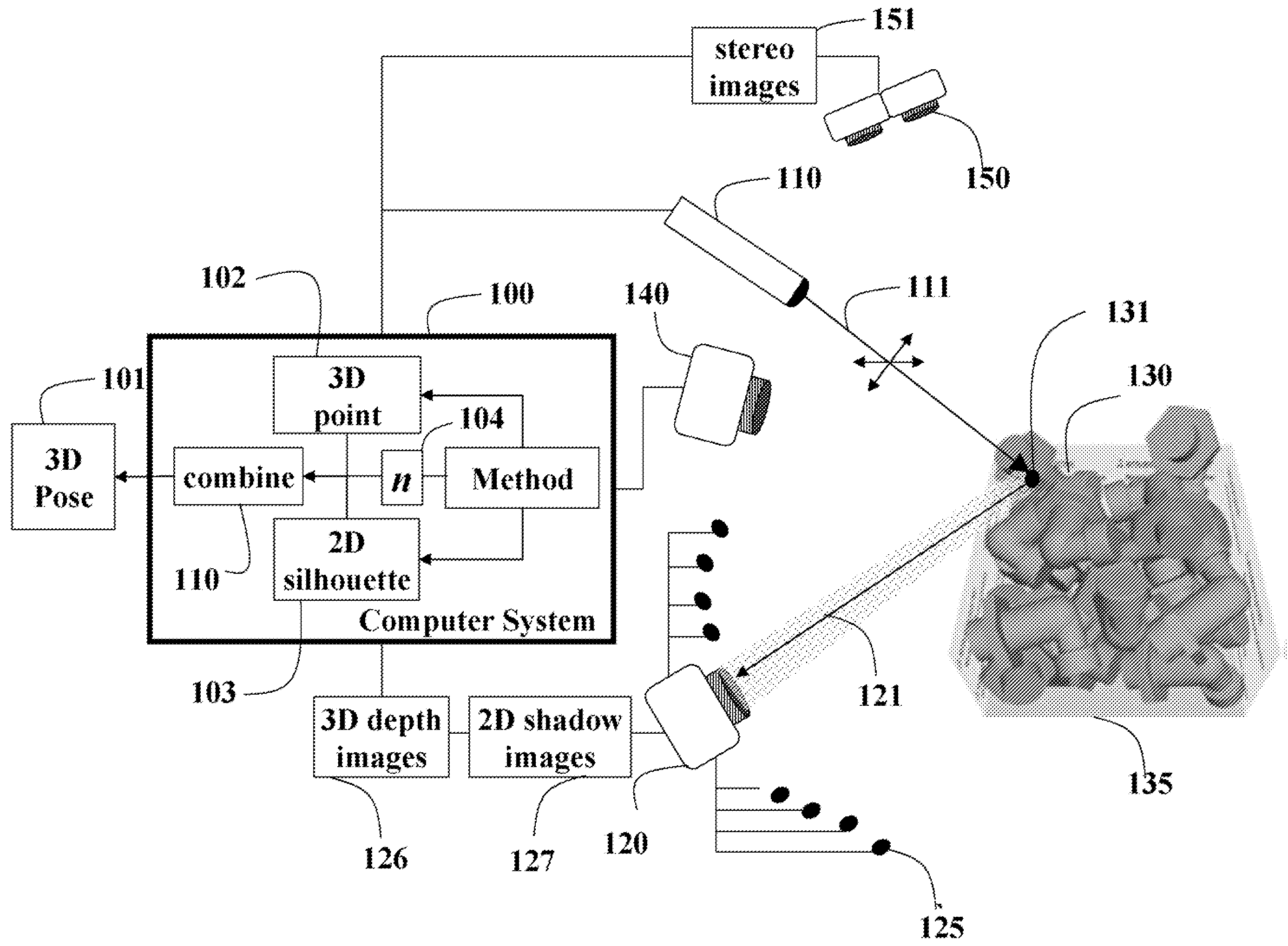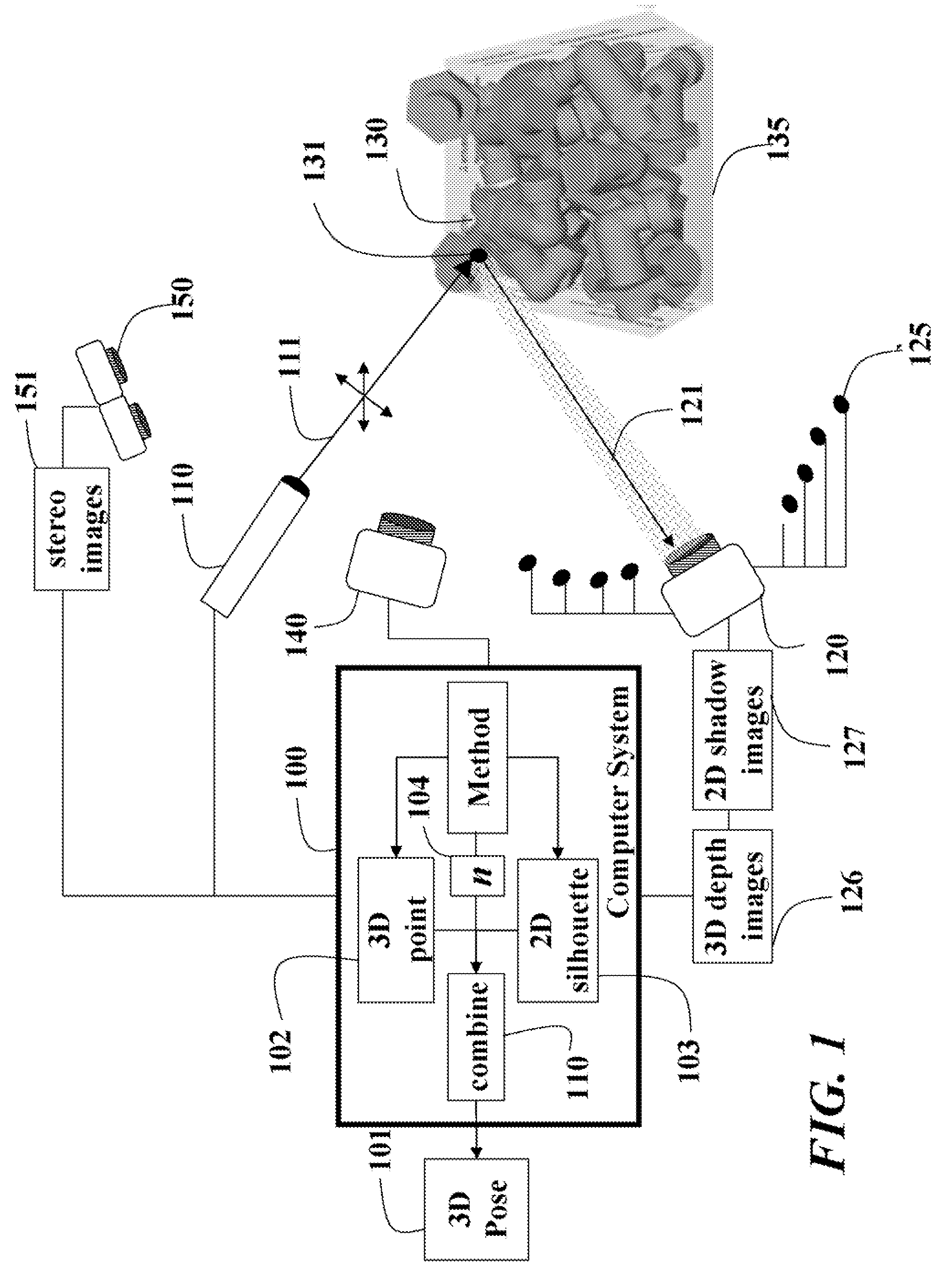Method and system for determining poses of semi-specular objects
- Summary
- Abstract
- Description
- Claims
- Application Information
AI Technical Summary
Benefits of technology
Problems solved by technology
Method used
Image
Examples
Embodiment Construction
[0022]FIG. 1 shows a system and method 100 for determining a 3D pose 101 of an object 130 that includes semi-specular surfaces according to an embodiment of our invention. The 3D pose as defined herein means the 3D location and the 3D orientation of the object.
[0023]The system includes a hybrid sensor including a laser scanner 110 and a camera 120. The laser scanner 110 emits a laser beam 111 in a pattern 112 that can be used to determine 3D range data in a set of coded images 326 acquired by the camera 120. The pattern can use Gray-codes so that the pattern at each point on the surface of the object is unique. Thus, the method determines 3D coordinate data at each point on the surface from the set of coded images 126.
[0024]The camera also 120 acquires light 121 reflected by the object. The camera includes multiple flash units 125, e.g., LEDs, arranged at different locations, e.g., in an octagon or circular pattern, around the camera. The LEDs are bright point light sources that cas...
PUM
 Login to View More
Login to View More Abstract
Description
Claims
Application Information
 Login to View More
Login to View More - R&D
- Intellectual Property
- Life Sciences
- Materials
- Tech Scout
- Unparalleled Data Quality
- Higher Quality Content
- 60% Fewer Hallucinations
Browse by: Latest US Patents, China's latest patents, Technical Efficacy Thesaurus, Application Domain, Technology Topic, Popular Technical Reports.
© 2025 PatSnap. All rights reserved.Legal|Privacy policy|Modern Slavery Act Transparency Statement|Sitemap|About US| Contact US: help@patsnap.com



